
Eupeodes, the aphideater flies, are a genus of moderate hoverflies in the family Syrphidae. They are distributed worldwide. They are black with yellow markings and can be easily confused with other genera in the Syrphini tribe. The adults feed on nectar and pollen as sources of energy and protein, respectively. Larvae feed on a wide variety of aphids.

Eupeodes corollae is a very common European species of hoverfly. Adults are 6–11 millimetres (0.24–0.43 in) in body length. Males and females have different marking on the abdomen; males have square commas on tergites 3 and 4, whereas females have narrow commas. Larvae feed on aphids. This species has been used experimentally in glasshouses as a method of aphid control, and to control scale insects and aphids in fruit plantations. They were found to be partial to the fruit, eating more fruit than aphids.

Eupeodes luniger is a common species of hoverfly.
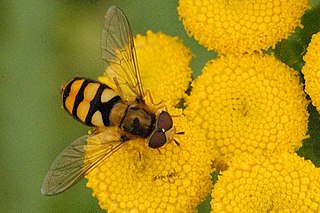
Eupeodes latifasciatus is a species of hoverfly. Adults feed on nectar; larvae feed on aphids and scale insects.

Dasysyrphus is a genus of hover flies with 50 identified species distributed worldwide. While the genus is relatively easy to identify, genera key the differences between species have a more narrow range of variations. Therefore, identification of species by images of specimens alone should be made with care.

Leucozona laternaria is a European species of hoverfly.

Leucozona lucorum is a Palearctic and Nearctic species of hoverfly.
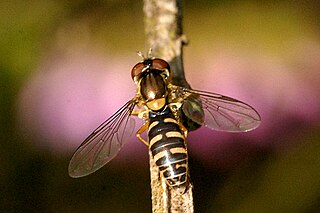
Sphaerophoria fatarum is a European species of hoverfly.

Sphegina is a genus of small, slender hoverflies. They are widespread throughout Eurasia and North America. In flight they seem to have long hind legs which they often carry hanging down, making them resemble sphecid or ichneumonid wasps. Adult Sphegina are usually found in damp and shady habitats close to water in forested areas, and several species can often be found together. They often feed on white and yellow flowers of Apiaceae, Ranunculaceae, Asteraceae, and Rosaceae like Crataegus, Sorbus, and Sorbaria. Larvae nest in the sap of living and dead trees or in decaying cambium under tree bark lying in water or other damp conditions. The larvae of some species have been discovered in the tunnels of other xylophagous insects.

Brachyopa is a Holarctic genus of hoverflies whose grey and brown colouration is unusual for this family and these flies can easily be overlooked amongst members of other fly families. The larvae can be found under the bark of dead branches and trees in decaying sap.

Anasimyia is a genus of wetland hoverflies with aquatic larvae. The genus was formerly regarded as a subgenus of the similar Lejops, and recently elevated to genus.
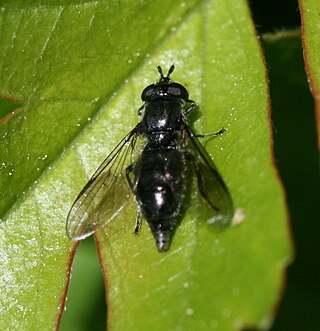
Pipiza austriaca is a species of hoverfly, from the family Syrphidae, in the order Diptera.

Anasimyia contracta is a European species of hoverfly.

Melangyna umbellatarum is a Holarctic species of hoverfly.
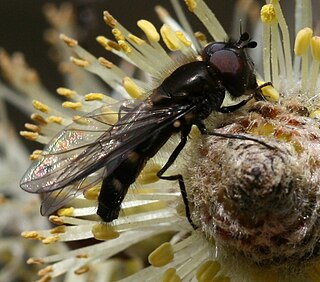
Melangyna quadrimaculata is a European species of hoverfly.
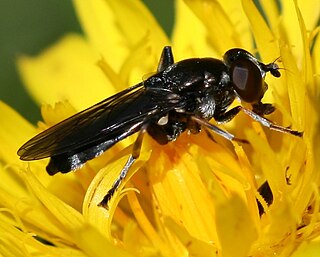
Xylota jakutorum is a Palearctic species of hoverfly.
Eupeodes bucculatus is a Palearctic hoverfly.
Eupeodes nielseni is a Palearctic hoverfly.

Eupeodes nitens is a Palearctic species of hoverfly.














